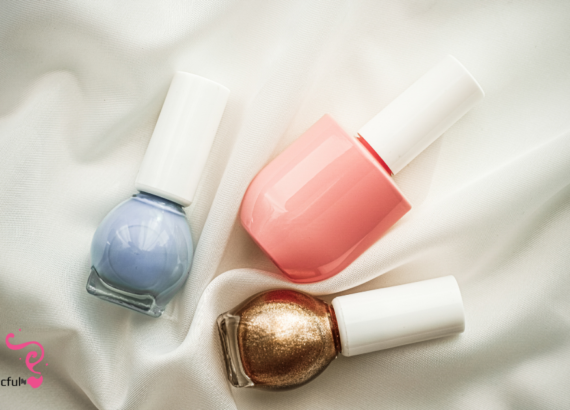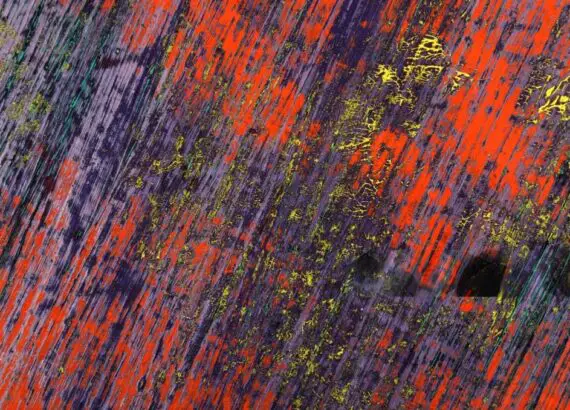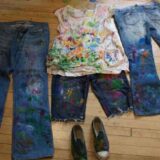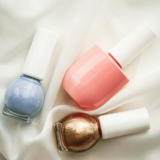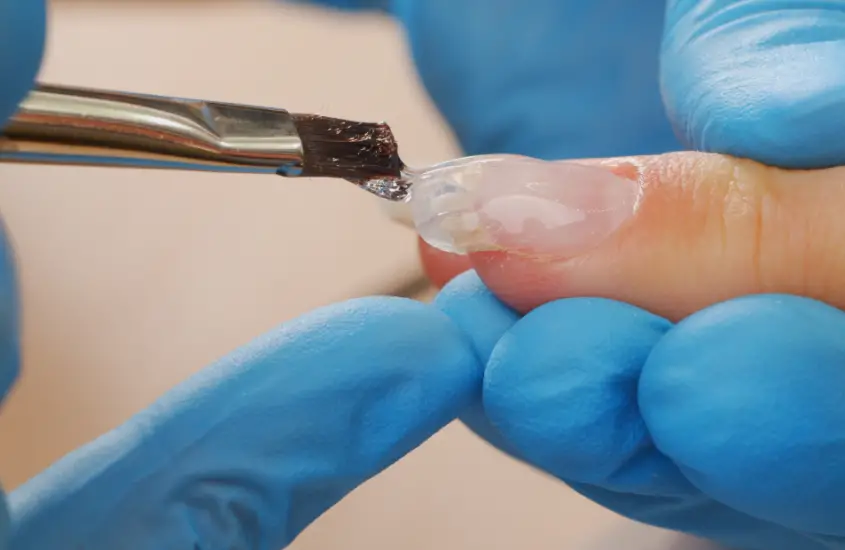Blending of Acrylic Colors: Unveiling the Artistic Magic
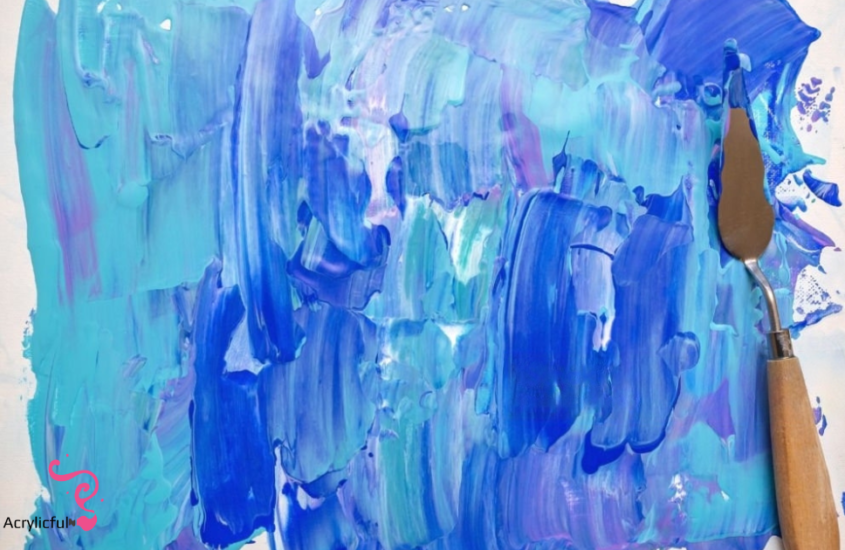
Introduction:
The appeal of acrylic painting, a medium that offers a brilliant palette and unlimited possibilities, has captured artists all over the world. This comprehensive tutorial takes you on a trip through the enchanting art of blending acrylic colors, exploring techniques that will take your artwork to new heights.
Understanding Acrylic Paint: A Comprehensive Overview
Let’s build a firm understanding of acrylic paint before delving into the nuances of blending. Known for its quick drying time and water-soluble properties, acrylics provide artists with a dynamic and expressive medium for their creative endeavors.
Acrylic paint consists of pigments suspended in an acrylic polymer emulsion, which serves as the binder. This particular composition not only adds to the diversity of the medium but also affects its drying time and texture.
Essential Tools and Materials: Setting the Stage of Blending of Acrylic Color
To achieve mastery in blending acrylic colors, it’s imperative to assemble the right tools. Let’s delve into the essential arsenal that sets the stage for creating mesmerizing gradients and seamless transitions.
1. Selecting the Right Colors: The Alchemy of Acrylic Blending
The foundation of successful blending lies in the selection of colors. We’ll delve into the depths of color theory, exploring the psychological impact of different hues and guiding artists in crafting palettes that evoke specific emotions in their audience.
Consider the emotional resonance of warm colors like reds and yellows versus the calm and cool tones of blues and greens. Understanding the interplay of colors lays the groundwork for creating harmonious blends that convey the intended mood and atmosphere in your artwork.
2. Mixing Techniques: Crafting Your Symphony of Colors
Embark on the journey to master the art of color mixing, a gateway to unlocking the vast realms of your imagination. We’ll delve into time-honored techniques such as palette mixing and wet-on-wet applications, providing artists with the prowess to conduct a symphony of harmonious color blends directly on the canvas.
As you traverse this creative terrain, experiment with an array of brush sizes and shapes to yield diverse effects in your color mixes. It’s crucial to recognize that the palette knife transcends its role in mere mixing—it emerges as a potent tool for crafting bold textures and intriguing color patterns. So, let your artistic exploration unfold, seamlessly transitioning between techniques and tools to breathe life into your imaginative visions.
3. Gradient Magic: From Subtle Fades to Bold Contrasts
Embarking on an exploration of gradients opens doors to their profound transformative abilities. By delving into various techniques, you can master the art of achieving seamless transitions. From gentle fades that add depth to striking contrasts demanding attention, gradients empower you to elevate your artwork to new heights of visual allure.
To navigate this terrain effectively, grasp the fundamentals of light and shadow. This knowledge becomes a cornerstone for crafting realistic gradients. Take into account the direction of light within your composition, employing colors to mimic the interplay of light across diverse surfaces. In doing so, you unlock the potential to infuse your creations with a heightened level of visual sophistication.
Advanced Blending Techniques: Elevating Your Artistic Expression
1. Glazing: Adding Layers of Transcendence
Embark on the enchanting realm of glazing, a technique wherein translucent layers are meticulously added over dried paint. As you delve into this artistic approach, discover the otherworldly effects and heightened luminosity that glazes infuse into your artwork, crafting a visual tapestry that truly captivates the observer.
To master the art of glazing, commence with a fully dried base layer. Subsequently, thin your paint using a glazing medium or water to achieve the desired level of transparency. Apply these delicate layers gradually, building up the intensity to your liking. The key lies in experimentation—try out various glazing colors to inject complexity and depth into your compositions. The magic of glazing unfolds as you navigate through each layer, creating a masterpiece of nuanced brilliance.
2. Sgraffito: Crafting Texture Through Subtraction
Discover the unique technique of sgraffito, an approach that involves selectively scratching away layers of paint to reveal the intricate layers beneath. This method adds texture and visual interest, transforming your acrylic paintings into captivating works of art.
Sgraffito is particularly effective when working with contrasting colors. Scratch through top layers to expose underlying colors, creating dynamic and visually arresting textures. It’s a method that invites tactile exploration, as both the eyes and hands can appreciate the resulting surface.
Troubleshooting Acrylic Blending Challenges: Navigating the Artistic Odyssey
1. Overcoming Drying Time Challenges: Maximizing Blending Opportunities
Given the swift drying time of acrylics, artists often face challenges in maintaining optimal blending opportunities. However, various methods exist to extend these crucial moments, facilitating the incorporation of intricate details and ensuring a seamless flow of colors on your canvas.
To counter the swift drying time of acrylics, artists can turn to effective solutions such as the utilization of retarders or slow-drying mediums. By incorporating these additives, a significant extension of the drying time is achieved, providing artists with a broader window for blending and refining compositions. The crucial element here is experimentation—explore various brands and formulations to pinpoint the one that seamlessly integrates into your workflow, ultimately enhancing your overall artistic process.
2. Muddiness Prevention: Strategies for Vibrant and Crisp Blends
Muddiness can dampen the vibrancy of your blend. Discover strategies to maintain the clarity and distinctiveness of your colors, ensuring that your masterpiece retains its visual brilliance.
- Clean Your Brushes Thoroughly: Unintentional muddying might result from residual pigment on brushes. Clean your brushes on a regular basis, especially when switching between colors.
- Work from Light to Dark: Start with lighter colors and gradually build up to darker shades. This sequence prevents darker pigments from overpowering the lighter ones, preserving the clarity of your blends.
- Use a Limited Palette: Limiting the number of colors on your palette reduces the risk of muddiness. A focused color selection encourages thoughtful blending and enhances color harmony.
Conclusion:
In the broad tapestry of artistic inquiry, the completion of your acrylic color blending voyage is a celebration of the odyssey you’ve done. Each stroke offers a unique story of imagination and expression as you stand in front of your canvases adorned with a beautiful symphony of seamlessly mixed acrylic hues.
The beauty of blending of acrylic colors lies not only in the techniques mastered but in the emotions conveyed. Every gradient, every transition, and every texture represents a moment of your artistic evolution. It’s a celebration of the colors you’ve chosen, the challenges you’ve overcome, and the stories you’ve woven into your compositions.
So let us toast the endless possibilities that acrylic mixing offers by rising a figurative brush to the skies. Celebrate the complexities, mistakes, and great moments that contribute to the development of your artistic style. The end is not a farewell, but rather a call to new beginnings, inviting you to continue your discovery, take risks, and unleash your creativity.
In this conclusion, embrace the joy of creation, savor the satisfaction of a well-blended palette, and take pride in the visual symphony you’ve orchestrated. Your artistic odyssey continues with blending of acrylic colors, and each stroke is a note in the melody of your unique journey. May your future canvases be filled with even more vibrant blends, captivating textures, and the boundless spirit of artistic expression.
FAQs:
Q1: Can acrylics be blended on any surface?
Absolutely! Acrylics can be blended on various surfaces, including canvas, paper, wood, and even fabric. Experiment with different surfaces to discover the one that aligns with your artistic vision.
Q2: Is the use of blending mediums necessary?
While blending mediums are not required, they can improve the blending process by increasing drying time and enhancing paint flow, giving artists more control over their works.
Q3: How can I prevent streaks in my blends?
Use smooth, controlled strokes to avoid streaks, and keep your brushes clean. Experimenting with different brush types can also help to produce smoother mixes.
Q4: Can acrylics be blended with other paint types?
Certainly! Acrylics can be blended with other water-based paints. However, it’s crucial to consider compatibility and drying times to ensure a harmonious fusion of colors.
Q5: Where can I learn more about advanced blending techniques?
Expand your knowledge by exploring art forums, attending workshops, and engaging with online tutorials. These platforms provide in-depth insights into advanced blending techniques, allowing you to continually enhance your artistic skills.

